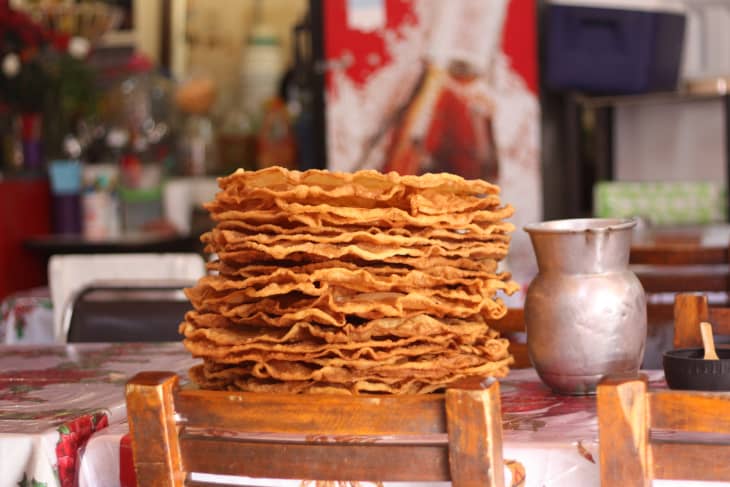My Christmas in Mexico City
One of my favorite holiday memories of Mexico City was on my first New Year’s Eve, when I ran down a dark street in my patent-leather heels, clutching an empty tote bag. My friend’s grandmother called, “Córrele, córrele!” (Run, run!)
In the States I usually spent New Year’s Eve in a bar or at a party, but dashing through a residential neighborhood just after midnight felt thrilling — especially if it truly meant I’d travel more in the new year. Maybe the red underwear (a Mexico City New Year’s tradition) and 12 grapes eaten exactly at midnight would work their lucky magic, too.
During my four years of living in Mexico’s capital it struck me over and over how important family, tradition and community were during the holidays. Each year our friends would invite us to spend important dates, Christmas Eve and New Years’ Eve, at their relatives’ houses, where we’d be warmly welcomed and fed.
Starting in early December, city markets would fill up with the necessary Christmas food supplies: slabs of imported salt cod for the tomatoey, garlicky bacalao a la vizcaína, and thick stalks of sugar cane, guavas and tejocotes for the warm perfumed punch known as ponche. Banana leaves and dried corn husks suddenly multiplied, stacked taller than your head for the preparation of tamales, a process that always involves several members of the family.
Colorful Christmas piñatas — big and star-shaped, with seven cones jutting out from a round base — hung from the market ceiling, dangling streamers.
The piñatas are a key element in the posadas, a series of holiday parties that happen in Mexico City in the days leading up to Christmas. In smaller villages, whole neighborhoods will walk the streets, knocking on neighbors’ doors and asking for posada, or shelter. (Spanish friars created the original posadas as a way to teach indigenous Mexicans the story of Jesus’ birth.) The visitors are eventually let inside, where they’re fed tamales, sheets of sugary, fried dough called buñuelos, ponche, and a thick chocolate-corn gruel called champurrado. More importantly, for any children anyway, the guests are allowed to whack the piñata, whose cones originally symbolized the seven deadly sins.
The traditional piñata filling is healthier than you’d expect: peanuts, sugar cane, oranges, tejocotes. Sometimes guests are given sparklers, too, which lends a festive atmosphere.
The ritual of these traditions is comforting. I admit this year — even though I’m back in the States — part of me longs to be back on that dark Mexico City street on New Year’s Eve, experiencing something new for the first time.
Christmas Around the World
We’re celebrating Christmas and the winter holidays around the world, inviting friends and fellow writers from The Philippines to France to Rwanda to share how the holidays are celebrated in their corner of the world.
